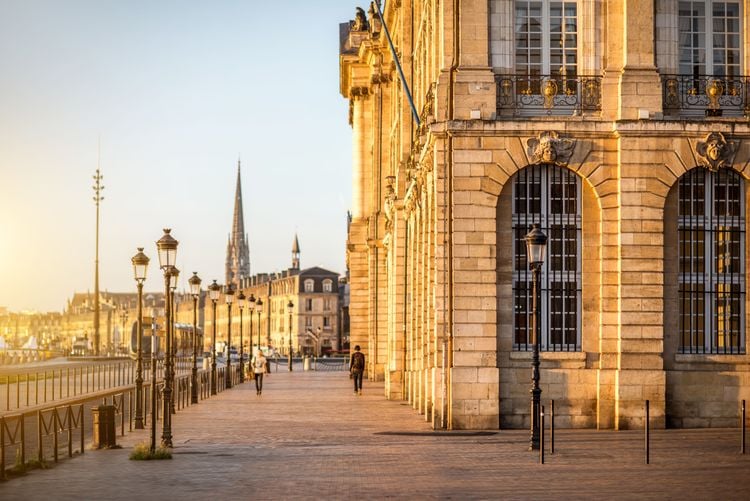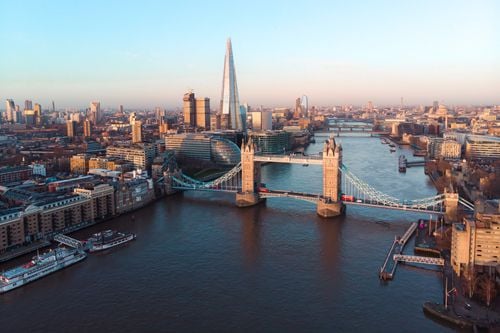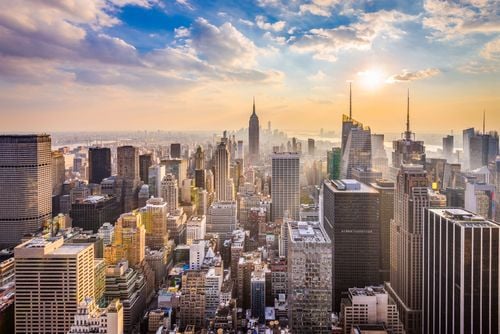The Gironde department has been cultivating its vineyards for 2000 years. The first vines were planted in the 1st century AD. From that time onwards, the wine trade spread and made Bordeaux and the Gironde a wine-producing mainstay, and the Bordeaux vineyard has since become without doubt one of the oldest high-quality vineyards in the world. Today, it covers 500 communes in the Gironde and produces a wide range of wines: dry whites, sweet and syrupy whites, rosés, red wines, clairets, etc.
France is known as wine country, with a large area of vineyards and several wine routes. As the world's wine capital, Bordeaux is home to some top-quality grape varieties. The wine route is very popular with tourists, with 5 main routes: the Médoc wine route, the Saint-Emilion wine route, the Pessac-Léognan wine route and the Grave and Sauterne wine route. On this journey, we meet the winegrowers who take us into their world during an exceptional tasting session. Fields of vines, steep hillsides, glass of wine in hand, the picturesque estates lead us across fields to the cellars of the region's prestigious houses. It's an opportunity to visit châteaux while sipping fine wines. The Wine Route can be completed in a few days or several hours, depending on your means of transport: car, bike or on foot. Discover Bordeaux's wine heritage.
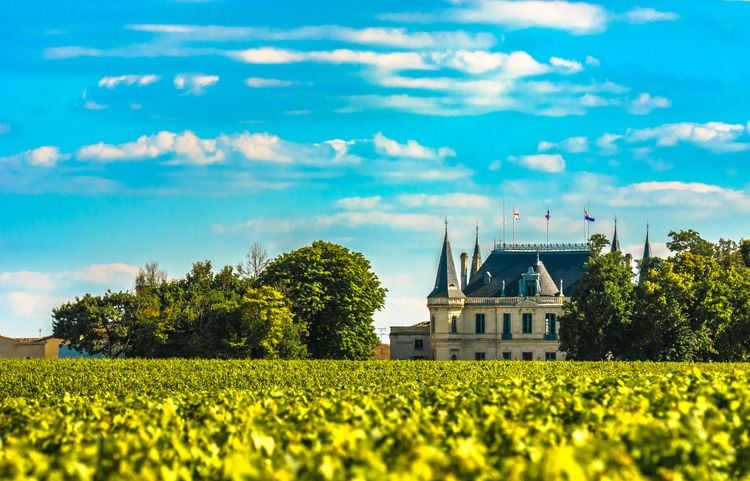
History of Bordeaux wine
Why go there?
Bordeaux wine is the envy of the world. Its reputation has spread beyond national borders. The red wines produced in the region are highly prized. Thanks to their geographical location, the Bordeaux vineyards enjoy a temperate, oceanic climate. Along the way, you'll come across a number of properties that are emblematic of Bordeaux wine production. The wine route could also be called the châteaux route.
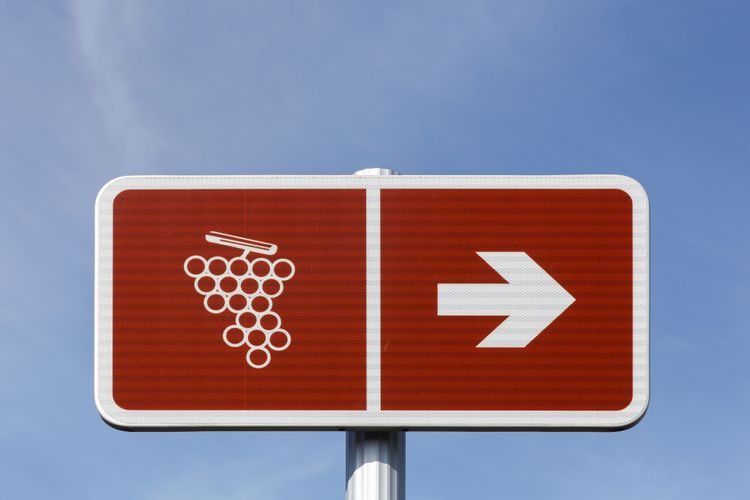
Bordeaux wine route sign, France.
- © ricochet64 / ShutterstockThe Bordeaux vineyards and the wines they produce are among the most famous in the world, and Bordeaux is a global benchmark. France's third-largest wine-producing department, with 117,200 hectares of cultivated vines, the Gironde in Aquitaine, where all the Bordeaux vineyards are located, boasts 57 appellations and a unique diversity of terroirs. Some of these wines, the Premiers Crus, are the Holy Grail of many wine-lovers, for whom the names Château Lafite Rothschild, Château Haut-Brion, Château Latour, Château Margaux and Château Mouton Rothschild ring in their ears like a sweet, bewitching melody.
The creation of exceptional grape varieties, the Bordeaux terroir
To create these legendary wines, the winemakers mainly use Merlot and Cabernet Sauvignon for the red grape varieties (although Cabernet Franc, Carmenère, Malbec and Petit Verdot can also be found), and Sémillon, Sauvignon and Muscadelle for the white grape varieties (Colombard, Merlot Blanc and Ugni blanc are also present to a lesser extent).
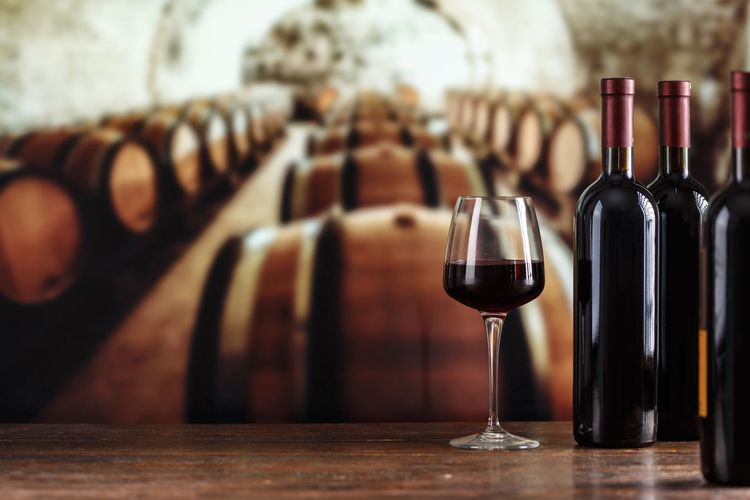
Wine cellar with wine bottle and glass.
- © Shyripa Alexandr / ShutterstockThe terroir of Bordeaux may seem complex, but the distribution of its different vineyards gives a clearer picture. Stretching along the left bank of the Gironde, the Médoc, located more precisely between Saint-Vivien-de-Médoc to the north and Bordeaux to the south, is framed by the ocean on one side, from which it is protected by a forest, and the Gironde estuary to the east. This "middle country" (Médoc) is made up of predominantly gravel (a mixture of gravel and sand) or clay-limestone soils, which promise to produce high-quality grapes. With its 60 Grands Crus Classés and 8 Appellations d'Origine Contrôlée (2 regional: Médoc and Haut-Médoc and 6 local: Saint-Estèphe, Pauillac, Saint-Julien, Listrac-Médoc, Moulis-en-Médoc and Margaux), the Médoc is something of a Mecca for oenologists. The "Route des Châteaux" is the ideal way to discover the Médoc, starting in Bordeaux and taking in the most prestigious Grands Crus Classés and châteaux with sometimes unusual architecture.
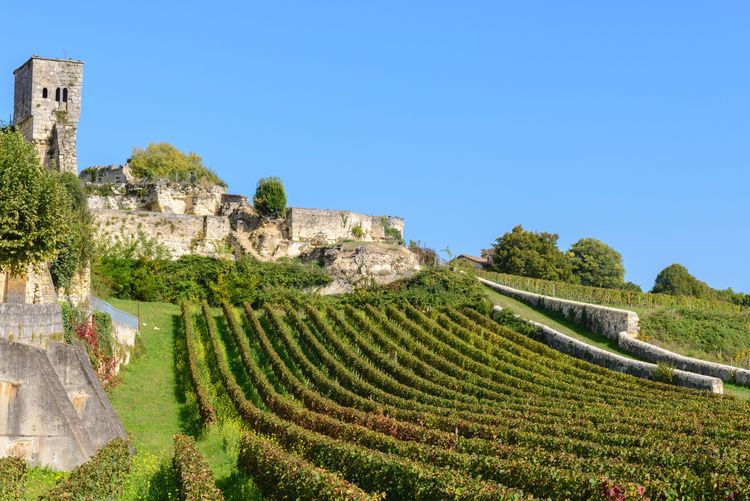
Distribution of the territory
The Libournais vineyards occupy the southern part of the right bank of the Dordogne. Since the mid-18th century, wines with such famous names as Pomerol, Saint-Emilion and Fronsac have been produced here. There are two appellations around Saint-Emilion: Saint-Emilion and Saint-Emilion Grand Cru. There are also two appellations around the village of Pomerol: Pomerol and Lalande-de-Pomerol, while to the north of Saint-Emilion, around the villages of Saint-Georges, Puisseguin, Montagne and Lussace, there are the "Satellites of Saint-Emilion" appellations. It's impossible not to mention Saint-Emilion when talking about Bordeaux wine. A veritable institution in the region, it's essential to stop off here if you're passing through to discover its wine heritage. What's more, Saint-Emilion is not just about (very good) wine or a simple château, it's also a medieval village listed as a UNESCO World Heritage Site.
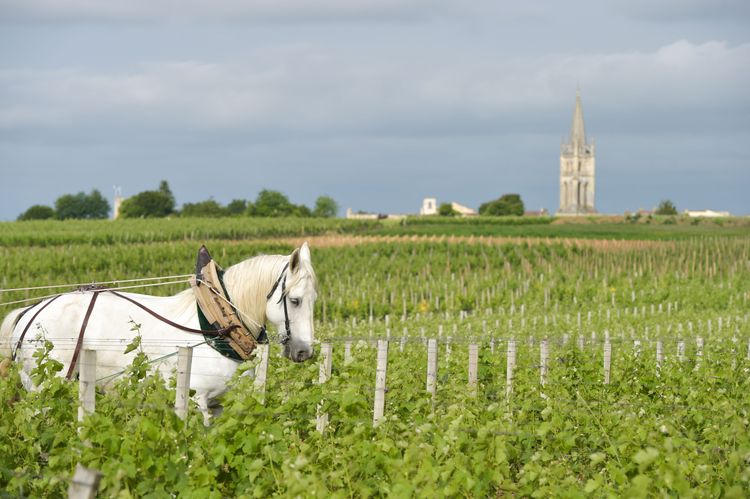
Vignobles de Saint-Émilion, vignobles de Bordeaux aux beaux jours, France.
- © FreeProd33 / ShutterstockThe Entre-Deux-Mers vineyards owe their name to their location between the Dordogne and Garonne seas. With its landscape dotted with bastides, old villages, dovecotes, abbeys and mills, this region is richer in cultural heritage than in the prestige of its wines (compared with other Bordeaux vineyards, of course). Entre-Deux-Mers is made up of several appellations, the most characteristic and largest in terms of production being the Entre-Deux-Mers Appellation d'Origine Contrôlée. To the north-west of the region lies the Graves de Vayres appellation, to the north-east, towards the Dordogne, the Sainte-Foy-Bordeaux appellation, and to the south the Premières Côtes de Bordeaux appellation, extended by the Benauge region and the Côtes de Bordeaux Saint-Macaire. What better way to discover the Entre-Deux-Mers vineyards than on a journey through history. With its medieval abbeys, fortified towns and memories of two of the region's greatest writers, Montaigne and Mauriac, the "Route des Bastides" is a perfect blend of wine and culture.
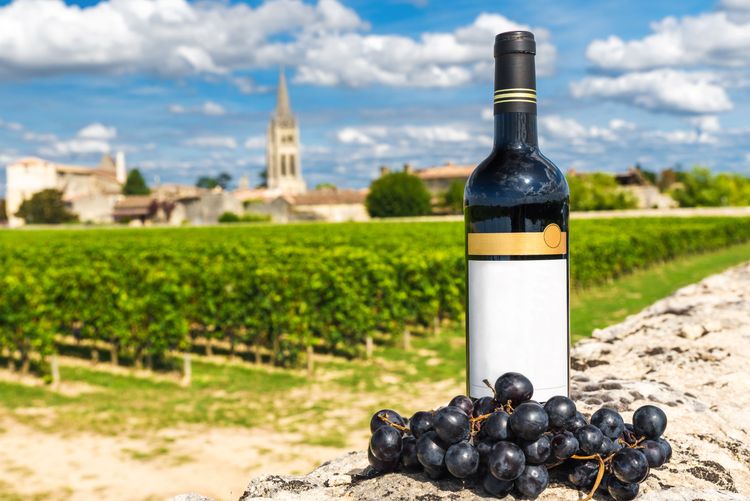
Bottle of red wine against a background of vineyards in Saint-Émilion, Bordeaux, France on a sunny day.
- © artem evdokimov / ShutterstockThe only French vineyard to bear the name of its soil type, Graves stretches from the Jalle Blanquefort in the north to Langon in the south. The region is hemmed in between the Garonne to the east and the Landes forest to the west. The unique character of Graves wines is entirely due to the soil, which is made up of a mixture of quartz, ochre, white, red and rosé quartzite, jasper, agatoid, flint and lydian rock. It is the reflection of the sun's rays off this soil that gradually warms the grapes and allows them to ripen better, which is what gives Graves its unique character. There are three AOCs in this region: Graves, Pessac-Léognan and Graves Supérieures (sweet white wines). The "Route des Graves" is a tourist trail that takes visitors from Bordeaux to Martillac, offering visits such as the Ecomusée de la Vigne et du Vin in Gradignan, the Château de la Brède, the birthplace of Montesquieu, and the Maison du Vin de Graves in Podensac.
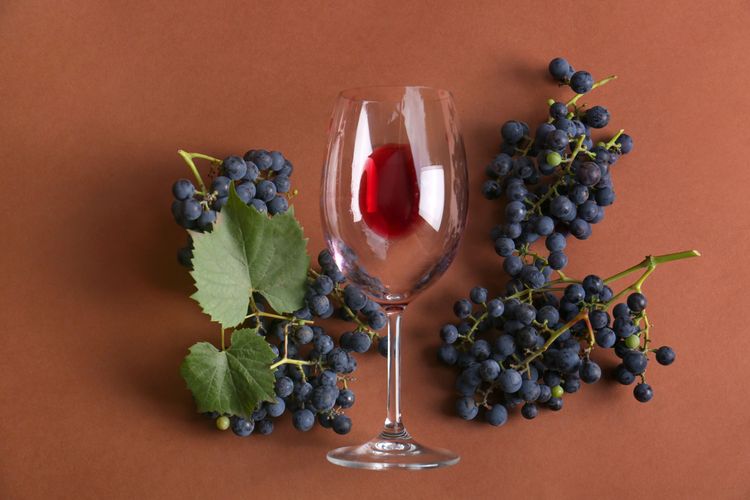
Inverted glass with red wine and grapes on brown background, flat screen background.
- © New Africa / ShutterstockWith its lush green hillsides and landscape, the Blayais and Bourgeais region is nicknamed "the little Switzerland of Gironde". In the 17th century, the vines produced white wines for distillation and the production of Bordeaux Fine. Situated on the northern part of the right bank of the Gironde, the vineyards include a regional appellation, Blaye, along with two other AOCs. After tasting the wines, you can explore the Vauban citadels of Blaye and Bourg-sur-Gironde and the Château de Blaye, summer residence of the archbishops of Bordeaux. From rolling vine-growing landscapes set against the backdrop of the estuary to pale stone villages, Romanesque churches and picturesque little ports, the "Route des Coteaux" tells the story of wine and the history of the people who live in this region. In the Blaye area, around 450 winegrowers work the land over 6,000 hectares of vines. Don't miss a visit to the citadel of Blaye, recently listed as a World Heritage Site by UNESCO in 2008.
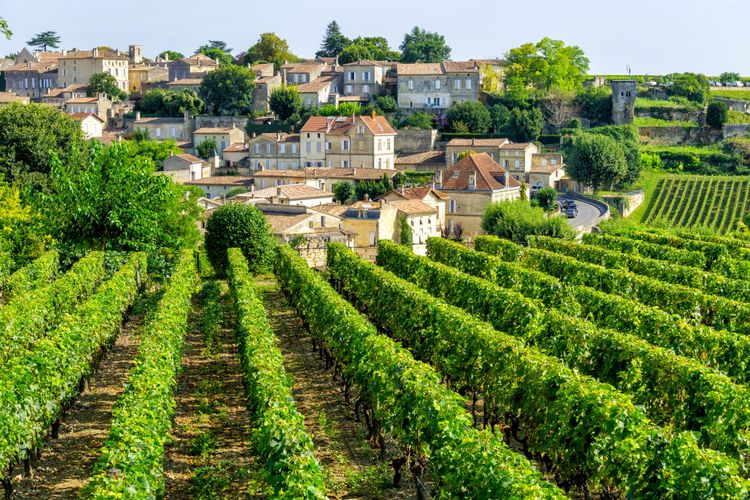
View over the vineyards of the village of Saint Emilion in the Bordeaux region, France.
- © laraslk / ShutterstockRed wine, white wine, to each his own!
Several grape varieties are used to make Bordeaux wines.
Red wines are essentially made from two major grape varieties: Merlot (which is the most represented) and Cabernet Sauvage.
Cabernet Franc, Carmenère, Malbec and Petit Verdot are close behind. The whites are mainly made from Sémillon, Sauvignon and Muscadelle.
Colombard, Merlot blanc and Ugni blanc are added to these three main grape varieties. Many of the wines made from these grape varieties are world-famous.
Red wines
Bordeaux Supérieur, which like its little brother Bordeaux Rouge is a regional appellation, is the ambassador of Bordeaux. It is appreciated for its body, bouquet and finesse. Bordeaux Clairet and Rosé are light, fruity wines that are best drunk young and are made from the great red grape varieties of the Bordeaux region.
Saint Emilion Grand Cru: the vineyards of Saint Emilion cover the former parish of Saint Emilion and extend over the eight neighbouring communes. Renowned for its mellowness and aromas of truffles and spices, it is rigorously "educated".
Haut Médoc is also world-famous, and for good reason: it's a full-bodied, invigorating wine with powerful aromas and a distinctive purple colour.
White wines
The most famous of Bordeaux's sweet white wines is Sauternes. Identifiable by its golden colour, it is fine, delicate and sometimes heady. Its bouquet reveals aromas of honey, acacia, peach, almond and toast.
To book an excursion along the Bordeaux wine route, visit the Tourist Office website.
Practical information
How can you get there?
You can cover the Bordeaux wine route by car, by bike or even on foot. By car, you can take around 3 days, while by bike, you'll need a week. You'll discover splendid landscapes, enjoy numerous visits to wineries and attend tastings of great wines.
How much time do you need?
You can easily spend a day or an afternoon in the area. It all depends on how much time you have.
Price: prices vary depending on the winery, but you should expect to pay an average of €50 per person.
Where to stay?
Throughout your trip along the Bordeaux wine route, you'll have the opportunity to stay in a variety of places.
The Badon Boutique Hotel, located in Saint Emilion, will be delighted to welcome you to its establishment, where you will sleep in rooms with a refined style and some even have a view of the garden.
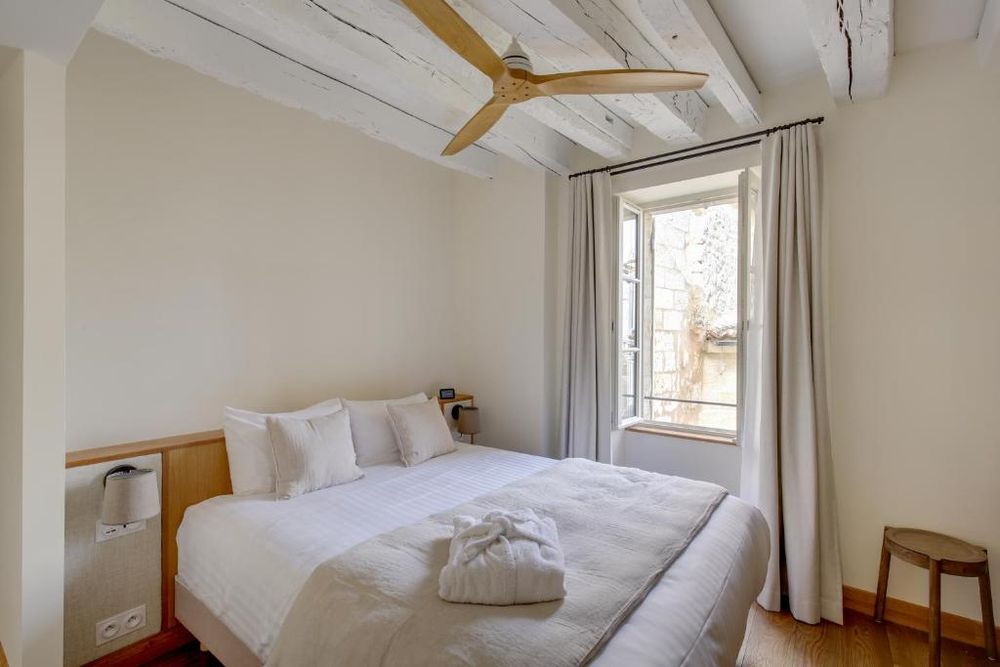 Bordeaux
Bordeaux
Badon Boutique Hotel
The Badon Boutique Hotel is a 4-star hotel located in Saint-Émilion, 39 km from the Chaban Delmas Bridge and the Cité du Vin. Bordeaux
Bordeaux
